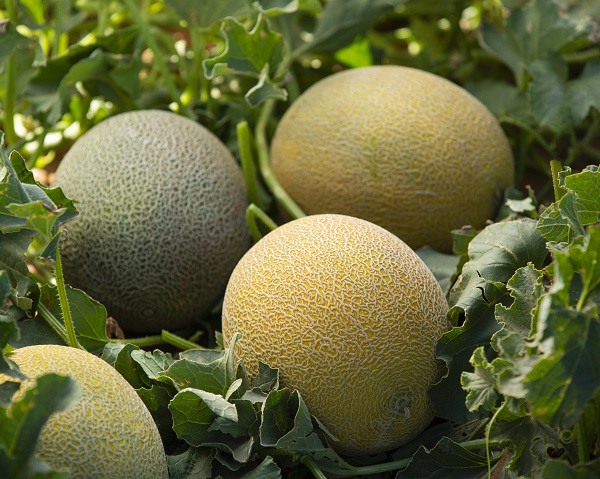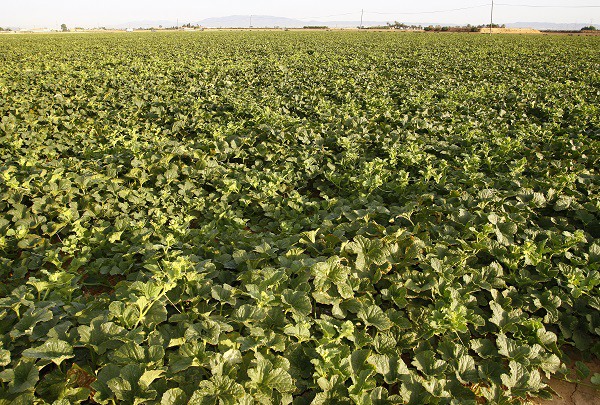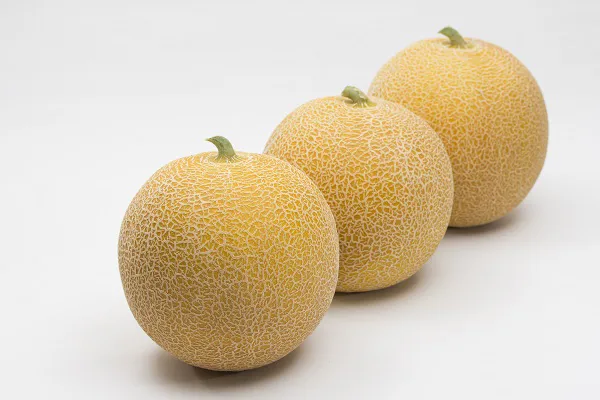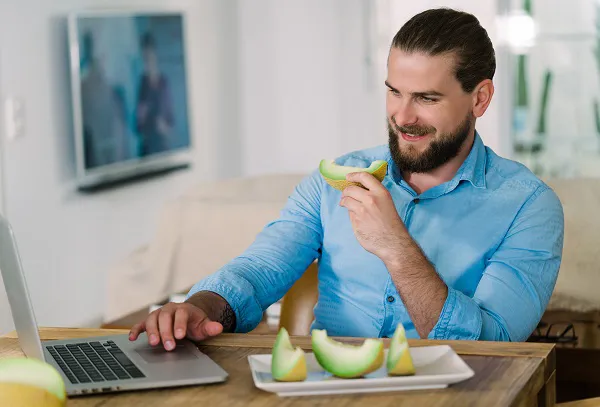Galia has always been a popular melon. It is still widely consumed, especially in Northern Europe. However, offering the year-round good-quality supply that shoppers and retailers expect is difficult. The Dutch breeding company BASF thus, partnered with a group of melon growers in Spain. The new Galia melons, marketed under the Galkia™ brand name, have consistent quality and flavor and a longer shelf life.
 Galkia™ melons have a ripeness indicator: the rind color shows the fruit’s degree of ripeness.
Galkia™ melons have a ripeness indicator: the rind color shows the fruit’s degree of ripeness.
The lack of consistent quality is currently one of the melon sector’s biggest challenges. According to the Galkia Group, that greatly affects consumer acceptance of the product. And that is detrimental to all parties in the chain, especially the growers. Developing flavorful varieties, therefore, has a high priority.
“Galkia™ is a good example of this. This melon has to win people over again, and so, revitalize the entire category,” says José Cánovas Ruíz of Fruca Marketing. He speaks on behalf of the Spanish Galkia™ melon growers, who all have high hopes for the new product line. “This year, Galkia™ already occupies more than 25% of the total Galia market. Its cultivation expansion will undoubtedly continue in the coming years.”

Ripeness indicator
BASF developed the Galkia™ melon, which has several unique characteristics. José explains what makes this melon so special: “It has a natural ripeness indicator - its rind. When that changes from green to yellow, you know it’s time to begin harvesting. That benefits growers greatly. It ensures quality consistency and an improved shelf life throughout the European market. And, most important, surely - its taste, a combination of aroma, flavor, and texture. It’s exactly what consumers expect when eating a Galia.”
What distinguishes Galkia™ from regular Galia melons? “Most Galia varieties now available are primarily ’long shelf life’ melons. To extend that shelf life, they're no longer allowed to ripen naturally. That affects their quality. It’s hard to guarantee consistency in this regard, especially since there’s no clear harvest indicator. Also, the melons don’t taste like much, which certainly affects consumer confidence in the product,” José says.
Gaining ground in Spain too
Europa - especially Northern Europe - is, naturally, Galia, and thus Galkia™ melons’ most important market. Yet the Galkia Group also sees good opportunities for other markets, such as Spain. “Piel de Sapo is traditionally that market’s melon.”

“Nonetheless, the Galkia™ is already getting off to a good start there, and demand is rising,” Ruíz continues. Galkia™ cultivation is currently concentrated in the Murcia and La Manche areas. To ensure a year-round supply, BASF is also partnering with growers in other European countries, as well as in North Africa and South America.
Regaining consumers’ confidence
He says Galkia™ is more than merely a brand. “This project focuses on the total European melon market. We want to begin a definite shift. Galia is still the most widely-eaten melon in Europe, but there’s been a clear negative trend over the last ten years. There’s been much focus on long shelf life in recent times, at the expense of quality and flavor. Consumer confidence has fallen sharply as a result.” The Galkia Group - Gregal, Jimbofresh, Fruca, and BASF - has joined forces and is doing everything possible to turn the tide.
According to José, when it came to the Galkia™ melons breeding program, BASF carefully considered all the partners’ input and ideas. “As a result, the new varieties meet the entire chain’s wishes and demands. For example, growers deem it important to consider the changing weather and soil conditions, residual resistance to certain diseases, and less use of plant protection products,” he explains.

“That, while the maximum production and minimum waste levels must remain guaranteed. When developing varieties, cultivation in different regions was also taken into account, thus, ensuring year-round delivery. For the chain and consumers, a product’s post-harvest shelf life and the highest level of the so-called ‘eating experience’, is a priority.”
The Galkia Group wants to regain consumers’ confidence and, thus, grow the category again. How? “By developing and offering new varieties that taste like melons should, and offer consistent quality. Galkia™’s first variety, Kirene F1, was an instant success. That’s what the melon market needs,” José concludes.
 Elvira Vitores
Elvira Vitores
BASF/Nunhems
elvira.vitores@vegetableseeds.basf.com
www.nunhems.com
 José Cánovas Ruíz
José Cánovas Ruíz
Fruca Marketing
Tel: +34 (0) 968 151 515
Mob: +34 (0) 638 105 411
Email:jose.canovasruiz@fruca.es
Website: www.fruca.es
